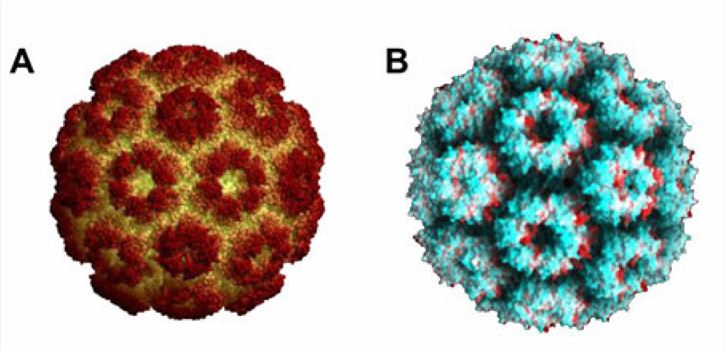Structural Research of Bromoviridae
Bromoviridae has six genera and infects a wide range of plants, causing major epidemics. The spherical or rod-shaped viral particles of the Bromoviridae are unenveloped and have three segments of single-stranded genomic RNA, of which RNA1 and RNA2 encode replication enzymes and RNA3 encodes the movement protein and capsid proteins (CPs). The RNA replication occurs inside the membrane globule, where frequent RNA-RNA recombination and fragment reassembly processes can be observed.
Features of Bromoviridae
Viral particles of Bromoviridae are spherical or pseudo-spherical with T = 3 icosahedral symmetry. The three types of icosahedral particles consist of 180 20 kDa CP molecules. In addition to viral RNA, brome mosaic virus (BMV) has recently been reported to package small amounts of host RNA. The members of the genus Cucumovirus package two subgenomic RNAs (sgRNAs) and a satellite RNA in addition to the three genomic RNAs. In general, the Bromoviridae have the following features:
- Viral particles are unenveloped, have icosahedral and rod-like geometries, and are ~26-35 nm in diameter.
- The ~8 kb single-stranded positive-sense RNA genome is divided into three RNAs in each genus.
- The 3' untranslated region of the viral RNA is either a transfer ribonucleic acid-like structure (TLS).
- Replication and virus particle assembly occur in cytoplasmic compartments.
- Cell-to-cell and long-distance transmission involves movement proteins and CPs.
- Transmission occurs mechanically via pollen, seeds, or insects.
Advances in the Structural Research of Bromoviridae
BMV has been extensively researched as a model for Bromoviridae. Using cryo-electron microscopy (cryo-EM) and X-ray crystallography, researchers have shown that the capsid structure of BMV is remarkably similar to cowpea chlorotic mottle virus (CCMV). The CP subunit folds into a β-barrel core organized within prominent pentameric and hexameric capsid grains. The hexameric subunit is further stabilized by interactions between the N-terminal portions, where six short β-strands form the β-hexameric tubules that regulate virus transmission in plants. In addition, the capsid granules are held together by the interaction of the C-terminal portion that extends radially from the capsid, with the C-terminal end anchored between the β-barrel core and the N-proximal loop.
 Figure 1. Surface capsid structure of the BMV (A) and CCMV (B). (Bujarski JJ, 2021)
Figure 1. Surface capsid structure of the BMV (A) and CCMV (B). (Bujarski JJ, 2021)
Creative Biostructure offers virus-like particles (VLPs) products produced from recombinant E. coli, yeast, insect cells, or HEK293 cells. Our characterized Bromoviridae viral particle products help clients advance research related to structure elucidation. Whether you are involved in virology research, vaccine development, or diagnostic applications, our off-the-shelf VLP products provide a solid foundation for your endeavors.
| Cat No. | Product Name | Virus Name | Source | Composition |
| CBS-V558 | Cowpea chlorotic mottle virus VLP (CP coat protein Proteins) | Cowpea chlorotic mottle virus | E. coli recombinant | CP coat protein |
| CBS-V712 | Chimeric P. falciparum & AlMV VLP (Pfs25; CP Proteins) | Alfalfa mosaic virus | Plant reccombinant | Pfs25; CP |
| Explore All Bromoviridae Virus-like Particle Products | ||||
Creative Biostructure is a leading company for structural analysis of biomolecules. With our advanced facilities and team of highly skilled scientists, we are at the forefront of unraveling the complex structure of Bromoviridae virus particles. We have expertise in virus-like particle construction, and our scientists are skilled in cryo-electron microscopy (cryo-EM), making an indispensable contribution to the research of the structure and dynamics of macromolecules and viruses.
We are committed to providing exceptional quality, superior science, and unrivaled client support. If you are interested in our products and services, please contact us. By leveraging our expertise in macromolecular structural analysis, we help you unlock new insights, drive innovation, and make breakthroughs in viral research.
References
- Bujarski JJ. Bromoviruses (Bromoviridae). Encyclopedia of Virology. 2021. 260-267.
- He G, et al. Brome Mosaic Virus (Bromoviridae). Encyclopedia of Virology. 2021. 252-259.
- Chakravarty, A. et al. Bromoviridae: A Family of Plant Viruses with Tripartite Genomes. eLS. 2021.